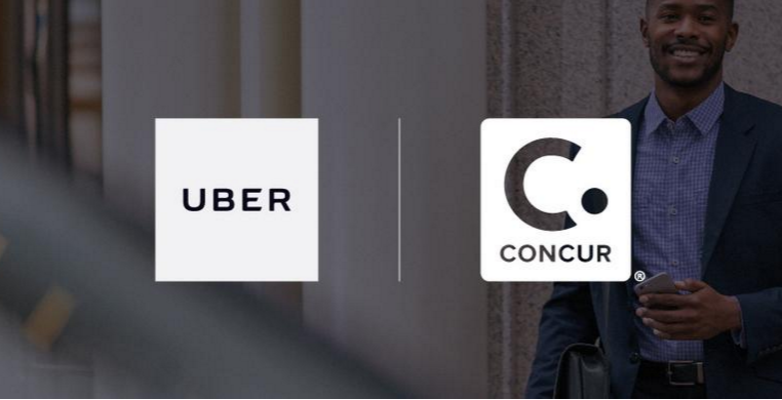
by twieberneit | Mar 16, 2021 | Blog, CRMKonvos |
Ecosystems is all I say – was his post in Linkedin. And as you can imagine, this sparked quite a discussion. Why? Because “he” is SAP’s venerable Chief CX Evangelist Esteban Kolsky. Not that it needs a reason to invite Esteban to a CRMKonvo (because he is always good for a well founded opinion) but this discussion and the topic itself certainly made it highly interesting to cover some ground and Esteban is always good for a lively discussion. What is an ecosystem – and how does it relate to the word “symbiosis” – if at all? How does one get an ecosystem viable? What is fairness in that context? Is trust a factor? Fairness? Or is that all too fuzzy? And – spoiler alert – as you can imagine by the title: They do not revolve around the customer. I will not tell you what it is though and leave that to Esteban himself. Best of all: Some highly interesting insight in the comments as well. Enjoy the CRMKonvo. We certainly...

by twieberneit | Jul 21, 2016 | Blog |
Yesterday the controversial ride share/taxi company Uber and the leading travel- and expense management company Concur announced an expansion of their relationship. With their “first-of-its-kind partnership and technology integration” Concur-connected businesses “will gain visibility into [their] Uber usage while increasing traveler productivity and satisfaction”. As part of the deal Uber will exclusively (for the moment, I guess) make its business features available to Concur customers available for free. This includes automated employee onboarding, policy controls, savings performance, and trip summary dashboards only available by the combination of data collected in the systems of the two companies. My Take – a Quadruple Win There are five involved parties. Concur Uber Concur customers Traveling employees It is conceivable that this partnership does good to all of them. On the fifth one – later … Concur wins The exclusivity of this partnership gives concur a nice edge over its competition. The travel management market is pretty contested. As you can see in the G2Crowd Grid for Expense Management Concur is not an uncontested leader. There is some scope left in both directions. Which leads us to the next two possible winners Concur Customers win Companies using Concur win by improved efficiencies, better overview and lower cost for taxi expenses – assuming that Concur doesn’t cream off the benefits – as the announcement states. There are basically five areas in which companies benefit: Companies can expect savings on taxi cost due to Uber instantly becoming a preferred provider A centralized account management connects employees to an account; this gives visibility into rides taken, including pick up, drop off, time of day, and route. Employees can use a central payment account or request reimbursement for...
by tz4rgp | Sep 27, 2012 | Blog |
Inspired by a blog post by Dr. Harish Kotadia I started to rethink about what the real key success factors for a social CRM strategy are. Harish used Walmart as an example, based upon their introduction of the “local” Walmart on Facebook. Walmart, being a retailer with more than 3,500 stores is surely a company for which the concept of (physical) proximity is important. From the outset I contradicted him (how dare I 😉 ). My point was, and is, that companies like Amazon, Dell, even Apple, arguably have a social CRM strategy but are not exactly local (there is not even a single Apple Retail Store in NZ …). They all manage without being physically local. Some brick and mortar retailers are even able and willing to bring their store to their customers by various technical means (e.g. Tesco but also others). So, I argue that proximity is more defined by ease of access, availability, interaction, rather than physical distance. This, in turn, means that physical proximity is not necessarily a key concept. This is especially true as being close, physically or otherwise, but irrelevant doesn’t bring a company anywhere, except into bankruptcy. So, relevance seems to be key. What is relevance? Relevance is the ability and willingness of companies to create value together with their customers. This goes beyond the mere transaction – giving money in exchange for a product or a service. Value for the company is not created by a single transaction, nor does the product itself create value for a customer. Value for the company is created by sustainable business. Sustainable business is not...
by tz4rgp | Sep 27, 2012 | Blog |
I have spent the last week talking about CRM and SCRM to three retail companies. They cover different, although overlapping ranges and are of very different organizational maturity states. They are also on different positions on both, the CRM and SCRM scales. What they have in common are a desire to have a 360 degree on their customers and the opinion that it is important to excel on the service side. They also are looking for or running tier one enterprise systems with Oracle/Siebel and SAP. None of the three companies is looking at their main software vendors when it comes to “social software”. The first company, a retailer in startup mode with a wide range, will actively pursue Social Media, for listening but also using it as a sales channel as part of their omni-channel strategy. They want to get the proverbial 360 degree view on the customer, who is “owned” in the marketing department, with PR, not marketing, owning their upcoming Social Media platform, an e-commerce group building the web shop, mobile applications, and sales apps to be embedded into several platforms – yes, there is something else beyond Facebook, if you leave the US. IT organizes and owns the ERP and CRM systems and implementations. Overall they are striving to implement a superior experience when interacting with their brand, which includes a branded community and listening/engagement abilities in the social web. The second one, an electronics retailer, wants to become the “best brand in the industry” and looks into a systems implementation from next year on, after some higher priorities are dealt with. These priorities include...
by tz4rgp | Aug 27, 2012 | Blog |
A few days ago @MarkTamis called me with a question: “Where do you think CRM heads to in future?” Uhhm, not that simple a question. It really forced me to think as all those thoughts, observations and discussions of the needed to be brought into a better structure. To lay the foundation I need to start with a definition of CRM; as I like it I start off with the one that Wikipedia provides: Customer relationship management (CRM) is a widely-implemented strategy for managing a company’s interactions with customers, clients and sales prospects. It involves using technology to organize, automate, and synchronize business processes—principally sales activities, but also those for marketing, customer service, and technical support. The overall goals are to find, attract, and win new clients, nurture and retain those the company already has, entice former clients back into the fold, and reduce the costs of marketing and client service.[1] Customer relationship management describes a company-wide business strategy including customer-interface departments as well as other departments This definition shows that the question has at least two layers: A technological one, and a strategic one. Of course, we should not forget about the customer. Let me start with the (for me, being a technology guy) easiest one: The technology. What I consider state-of-the-art right now is the availability of integrated software suites that cover marketing, sales, service, and analytics – this across a variety of channels, including mobile, web, interaction center. Surely, some software packages are stronger in one area or the other but essentially we have seen a tendency towards suites. The other thing that we have seen...




